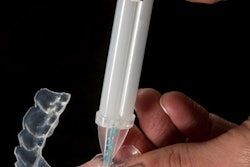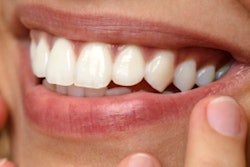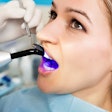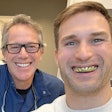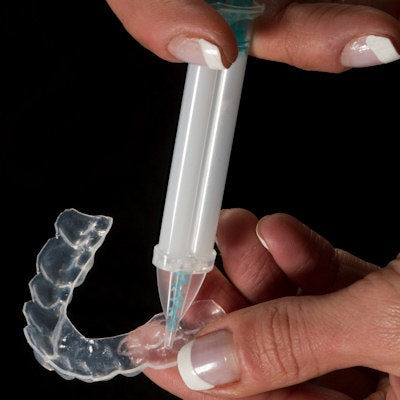
Using an electrokinetic flow method to whiten teeth offers a faster, equally effective alternative to other available light-diffusing treatments, according to a study published September 20 in Dental Materials.
Electrokinetic flow treatments provide the same concentration of hydrogen peroxide to enamel as diffusion-only teeth-whitening treatments, and they shorten operating times by 10 times, the researchers found.
"The proposed method showed significant improvements in whitening effects over control groups and thus offers promising clinically viable chairside applications with efficacy," wrote the authors, led by Chenhui Peng, PhD, of the Massachusetts Institute of Technology Research Laboratory of Electronics in Cambridge.
Teeth whitening remains a challenging procedure due to the difficulties of delivering molecules into various types of nanoporous tissues. Because current methods rely on peroxides being diffused into enamel nanochannels, the procedure requires adequate contact time with peroxides. Due to the use of enamel etching and light activation often required for in-office whitening treatments, patients can end up with sensitivity and potential soft-tissue damage.
The researchers studied electrokinetic flow treatment with hydrogen peroxide on freshly extracted human teeth by using different electric fields with varying operation times to compare results. The goal of the study was to find a way to improve efficacy and shorten treatment times.
During the technique, electrokinetic flows carry hydrogen peroxide through the nanopores of enamel. Effectiveness was verified by monitoring the electric current during treatment and analysis by photospectrometer.
The results of this in vitro study show the technique is less invasive and does not require acid etching and pretreatments, and it has the potential to enhance teeth whitening without requiring hard dental tissues to be heated.
In addition to reducing treatment time, the treatment may be used to reduce tooth sensitivity by infiltrating potassium nitrate simultaneously with the whitening agent, the researches noted. Also, applications may be used to treat early carious lesions by transporting material to remineralize enamel and deliver biomaterials.
The authors noted no study limitations and stated the results showed the technique is feasible for clinical applications.
"This method is simple, cost-effective, and easy to implement in the dental clinical applications," they wrote.





